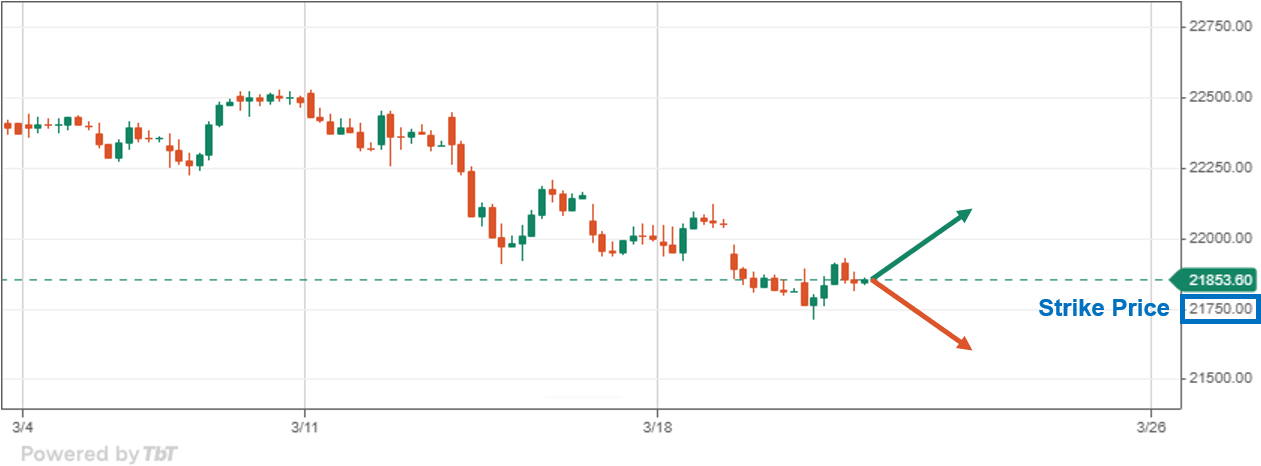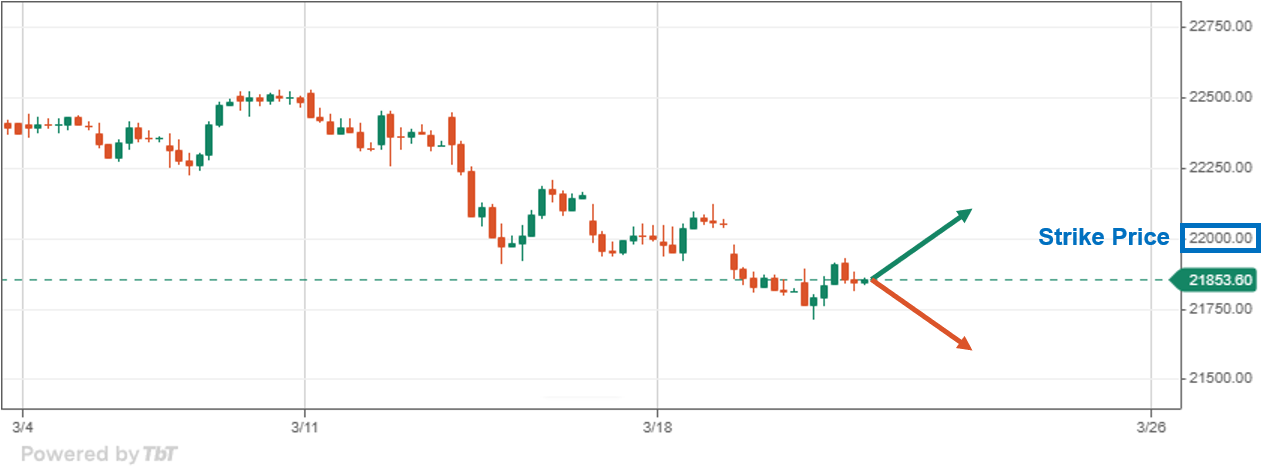Moneyness
Introduction to Moneyness
When you first start reading about trading options, you will undoubtedly come across the term ‘moneyness.’ You may also see terms like ‘in-the-money’ or ‘out-of-the-money.’ While this may seem technical, it is a straightforward concept.
To understand the concept of Moneyness, let’s go back to school! Remember exams? And those dreaded days when you got back your results? Unless you were among the class nerds, you probably first checked to see if you had passed.
- If you had scored 35%, you had scraped through or ‘just passed.’
- If you scored over 35%, you congratulated yourself on a job well done.
- Had you unfortunately scored below 35%, well, you prepared yourself to face the music at home – because you had failed.
Right? Moneyness is very similar. Let’s understand this with an example.
What is moneyness in call options?
Assume that you purchased a call option on the Nifty50 with a strike price of 21750, and the current price of the Nifty is 21853. You purchased this option with an expiry two weeks in the future. Over this two-week period, the Nifty could move up, down, or sideways. Depending on where the Nifty’s price is, it will determine the intrinsic value or ‘moneyness’ of this call option. The following three scenarios are possible:
- If the underlying price is equal to an option’s strike price, the option is said to be ‘at the money.’ In this example, when the Nifty is at 21750, our call option with a strike of 21750 will be at the money.
Consider the strike price like your 35% limit. So being ‘at the money’ is like scoring exactly 35% or where you have just passed the exam.
- A call option is described as ‘in-the-money’ if the underlying price is above the option’s strike price. As a reminder, a call option provides the owner the right to buy the underlying security at the strike price. The age-old adage of trading is: buy low, sell high. So the situation is favorable if you can sell the underlying higher than what you can buy it at (strike price). This represents being in-the-money (or the option has intrinsic value).
To relate back to our school results example, being ‘in-the-money’ is like scoring above 35%. Alternatively, a call option is described as ‘out-of-the-money’ if the underlying price is below the option’s strike price.
- This situation is similar to scoring below 35% or failing the exam.
Let’s look at a visual representation of the above example. In the chart below, we highlight the strike price of 21750 in blue and show the current price with a dotted green horizontal line.
Currently, this option contract is in-the-money because the underlying price is above the strike price. If the option were to expire right now, then this option would be valuable. If the underlying price rises higher, then the option contract will be further in-the-money. If the underlying price falls below the strike price, then the option contract will be out-of-the-money. If the option contract is out-of-the-money on expiry, then the option will be worthless.
Illustration 1: Call Option Moneyness Example
 Source: Upstox
Source: UpstoxWhat is moneyness in put options?
As we have discussed previously, put options often follow a pattern opposite to call options. Because of this, you cannot apply the ‘35% or fail’ concept to put options.
In this example, assume you bought a put option on the Nifty50 with a strike price of 22000 that expires in the next week. The current price of the Nifty is 21853. A put option gives the owner the right to sell the underlying security at the strike price. Thus, you would want to sell high and buy low rather than buy low and sell high. This means that with put options, the definition of moneyness is reversed. Since the underlying can move up, down, or sideways in price over the next week, let’s take a look at the different possibilities for moneyness of put options:
-
If the underlying price is equal to the put option’s strike price, the option is said to be ‘at the money.’ For at-the-money options, there is no difference between calls and puts. So when the Nifty is at 22000, our put option with a strike of 22000 will be at the money.
-
When we bought the put option, it was in-the-money because the underlying price was at 21853, which is below the strike price of 22000. If the Nifty falls in price from this point, the put option will become further in-the-money.
-
If the Nifty instead rises in value and moves above the strike price of 22000, then the put option will be out-of-the-money. If the Nifty is above the price of 22000 on expiry, then the put option will be worthless.
Illustration 2: Put Option Moneyness Example
 Source: Upstox
Source: UpstoxYou may wonder, "If an option has no intrinsic value, can I buy it for free?" Unfortunately, it doesn’t work that way because options can have both intrinsic value and ‘time value.’
We will discuss what Open Interest means in our next chapter.
Summary
- Moneyness describes the intrinsic value of an option.
- If the option has intrinsic value, it is in-the-money. If an option is in-the-money, the option has intrinsic value.
- If an option is out-of-the-money, the option has no intrinsic value.
- For call options, we showed that if the underlying stock or index price was currently above the strike price of the option that you purchased, then this call option has intrinsic value.
- If we owned a put option and the underlying stock or index price was currently below the strike price of the option that was purchased, then this put option has intrinsic value.
Is this chapter helpful?
- Home/
- Moneyness